Numerical Evaluation of Ultrasonic Detection of Solid Occlusions in CSP Molten Salt Piping
Abstract
1. Introduction
2. Theoretical Background
- Frequency f and Wavelength : Higher frequencies provide better resolution but suffer from greater attenuation. These quantities are linked by the relationwhere c is the sound speed in the considered medium.
- Acoustic Impedance (Z): Defined as , where is the medium density. It determines the reflection and transmission of ultrasound at material boundaries.
- Attenuation: Loss of wave energy due to absorption, scattering, and other mechanisms.
2.1. Propagation of Ultrasound in Materials
- Longitudinal Waves: Particle motion is parallel to the wave direction.
- Shear Waves: Particle motion is perpendicular to the wave direction, typically slower than longitudinal waves.
2.2. Ultrasonic Attenuation and Absorption
3. Materials and Methods
3.1. Solar Salt
- Liquid phase:where T is the temperature expressed in K.
- Solid phase:
3.2. Numerical Simulations
3.3. Mesh Refinement
3.4. Time Step Analysis
4. Results and Discussion
Statistical Analysis
5. Conclusions
Author Contributions
Funding
Institutional Review Board Statement
Informed Consent Statement
Data Availability Statement
Conflicts of Interest
References
- Muñoz, M.; Rubio, A.; Cosarinsky, G.; Cruza, J.F.; Camacho, J. Deep Learning-Based Algorithms for Real-Time Lung Ultrasound Assisted Diagnosis. Appl. Sci. 2024, 14, 11930. [Google Scholar] [CrossRef]
- Nairuz, T.; Lee, D.; Lee, J.H. Breast Ultrasound Computer-Aided Diagnosis System Based on Mass Irregularity Features in Frequency Domain. Appl. Sci. 2024, 14, 8003. [Google Scholar] [CrossRef]
- Pirri, C.; Pirri, N.; Macchi, V.; Guidolin, D.; Porzionato, A.; Caro, R.D.; Stecco, C. The Value of Fractal Analysis in Ultrasound Imaging: Exploring Intricate Patterns. Appl. Sci. 2024, 14, 9750. [Google Scholar] [CrossRef]
- Smagulova, D.; Samaitis, V.; Jasiuniene, E. Convolutional Neural Network for Interface Defect Detection in Adhesively Bonded Dissimilar Structures. Appl. Sci. 2024, 14, 10351. [Google Scholar] [CrossRef]
- Hill, C.R.; Bamber, J.C.; Ter Haar, G.R. Physical Principles of Medical Ultrasonics; Wiley: Hoboken, NJ, USA, 2005; pp. 1–511. [Google Scholar] [CrossRef]
- ASNT. Nondestructive Testing Handbook, Vol. 7: Ultrasonic Testing (UT)— NÃO USEI; ASNT: Columbus, OH, USA, 2007; Volume 7, pp. 1–600. [Google Scholar]
- Andrei, S.; Dukhin, P.J.G. Characterisation of Fluids and Colloids Using Ultrasound, 1st ed.; Elsevier: Amsterdam, The Netherlands, 2010. [Google Scholar]
- Goetz, A.S.D.; Goetz, P.J. Characterization of Liquids, Nano- and Microparticulates, and Porous Bodies Using Ultrasound. Stud. Interface Sci. 2010, 24, 425–439. [Google Scholar]
- Peinado Gonzalo, A.; Pliego Marugán, A.; García Márquez, F.P. A review of the application performances of concentrated solar power systems. Appl. Energy 2019, 255, 113893. [Google Scholar] [CrossRef]
- Muñoz-Sánchez, B.; Nieto-Maestre, J.; Veca, E.; Liberatore, R.; Sau, S.; Navarro, H.; Ding, Y.; Navarrete, N.; Juliá, J.E.; Fernández, Á.G.; et al. Rheology of Solar-Salt based nanofluids for concentrated solar power. Influence of the salt purity, nanoparticle concentration, temperature and rheometer geometry. Sol. Energy Mater. Sol. Cells 2018, 176, 357–373. [Google Scholar] [CrossRef]
- Cimmino, L.; Barco Burgos, J.; Eicker, U. Exergy and thermoeconomic analysis of a novel polygeneration system based on gasification and power-to-x strategy. Renew. Energy 2024, 236, 121438. [Google Scholar] [CrossRef]
- Zhang, H.L.; Baeyens, J.; Degrève, J.; Cacères, G. Concentrated solar power plants: Review and design methodology. Renew. Sustain. Energy Rev. 2013, 22, 466–481. [Google Scholar] [CrossRef]
- Ejima, T.; Yamamura, T. Thermophysical properties of molten salts: Hypersonic velocities of molten alkali nitrates and their mixtures. Int. J. Thermophys. 1984, 5, 131–148. [Google Scholar] [CrossRef]
- Ding, W.; Bauer, T. Progress in Research and Development of Molten Chloride Salt Technology for Next Generation Concentrated Solar Power Plants. Engineering 2021, 7, 334–347. [Google Scholar] [CrossRef]
- Piemonte, V.; Falco, M.D.; Tarquini, P.; Giaconia, A. Life Cycle Assessment of a high temperature molten salt concentrated solar power plant. Sol. Energy 2011, 85, 1101–1108. [Google Scholar] [CrossRef]
- Boretti, A. Optimizing Concentrated Solar Power: High-Temperature Molten Salt Thermal Energy Storage for Enhanced Efficiency. Energy Storage 2024, 6, e70059. [Google Scholar] [CrossRef]
- Mazue, G.; Viennet, R.; Hihn, J.Y.; Carpentier, L.; Devidal, P.; Albaïna, I. Large-scale ultrasonic cleaning system: Design of a multi-transducer device for boat cleaning (20 kHz). Ultrason. Sonochem. 2011, 18, 895–900. [Google Scholar] [CrossRef] [PubMed]
- Zhang, B.C.; Jia, X.J.; Li, F.Y.; Sun, Y.H. Research on the Effect of Molten Salt Ultrasonic Composite Cleaning for Paint Removal. ACS Omega 2019, 4, 17072. [Google Scholar] [CrossRef] [PubMed]
- Eckert, C.E. Apparatus and method for ultrasonic detection of inclusions in a molten body. U.S. Patent 4,662,215, 5 May 1987. [Google Scholar]
- Guthrie, R.; Isac, M. In-Situ Sensors for Liquid Metal Quality. In Sensors, Sampling, and Simulation for Process Control; Wiley: Hoboken, NJ, USA, 2011; pp. 1–14. [Google Scholar] [CrossRef]
- Findikoglu, A.T.; Droessler, J.E.; Chlistunoff, J.; Goff, G.S. Noninvasive, In Situ Acoustic Diagnosis and Monitoring of Corrosion in Molten-Salt Systems. Corrosion 2019, 75, 1230–1236. [Google Scholar] [CrossRef] [PubMed]
- Higgs, R.W.; Litovitz, T.A. Ultrasonic Absorption and Velocity in Molten Salts. J. Acoust. Soc. Am. 1960, 32, 1108–1115. [Google Scholar] [CrossRef]
- Bell, S.; Steinberg, T.; Will, G. Corrosion mechanisms in molten salt thermal energy storage for concentrating solar power. Renew. Sustain. Energy Rev. 2019, 114, 109328. [Google Scholar] [CrossRef]
- Bhardwaj, M.C. Principles and Methods of Ultrasonic Characterization of Materials. Adv. Ceram. Mater. 1986, 1, 311–324. [Google Scholar] [CrossRef]
- Galicia, D.N.; Hernandez, A.V.; Salas, L.L. Experimental determination of the amplitude attenuation coefficient of ultrasound in pure water: A comparison between some pulse techniques. In Proceedings of the CCE 2012—2012 9th International Conference on Electrical Engineering, Computing Science and Automatic Control, Mexico City, Mexico, 26–28 September 2012. [Google Scholar] [CrossRef]
- Marcus, Y. The compressibility and surface tension product of molten salts. J. Chem. Phys. 2013, 139, 124509. [Google Scholar] [CrossRef] [PubMed]
- Marcus, Y. The compressibility of molten salts. J. Chem. Thermodyn. 2013, 61, 7–10. [Google Scholar] [CrossRef]
- Grindley, T.; Lind, J.E. Thermodynamics of Molten Salts. J. Chem. Phys. 1972, 56, 3602–3607. [Google Scholar] [CrossRef]
- NDT Testing Systems & Consultancy Services—Ionix Advanced Tecnologies. Available online: https://ionixadvancedtechnologies.co.uk/2023/07/06/case-study-i-ultrasonic-monitoring-of-molten-salt-for-energy (accessed on 20 January 2025).
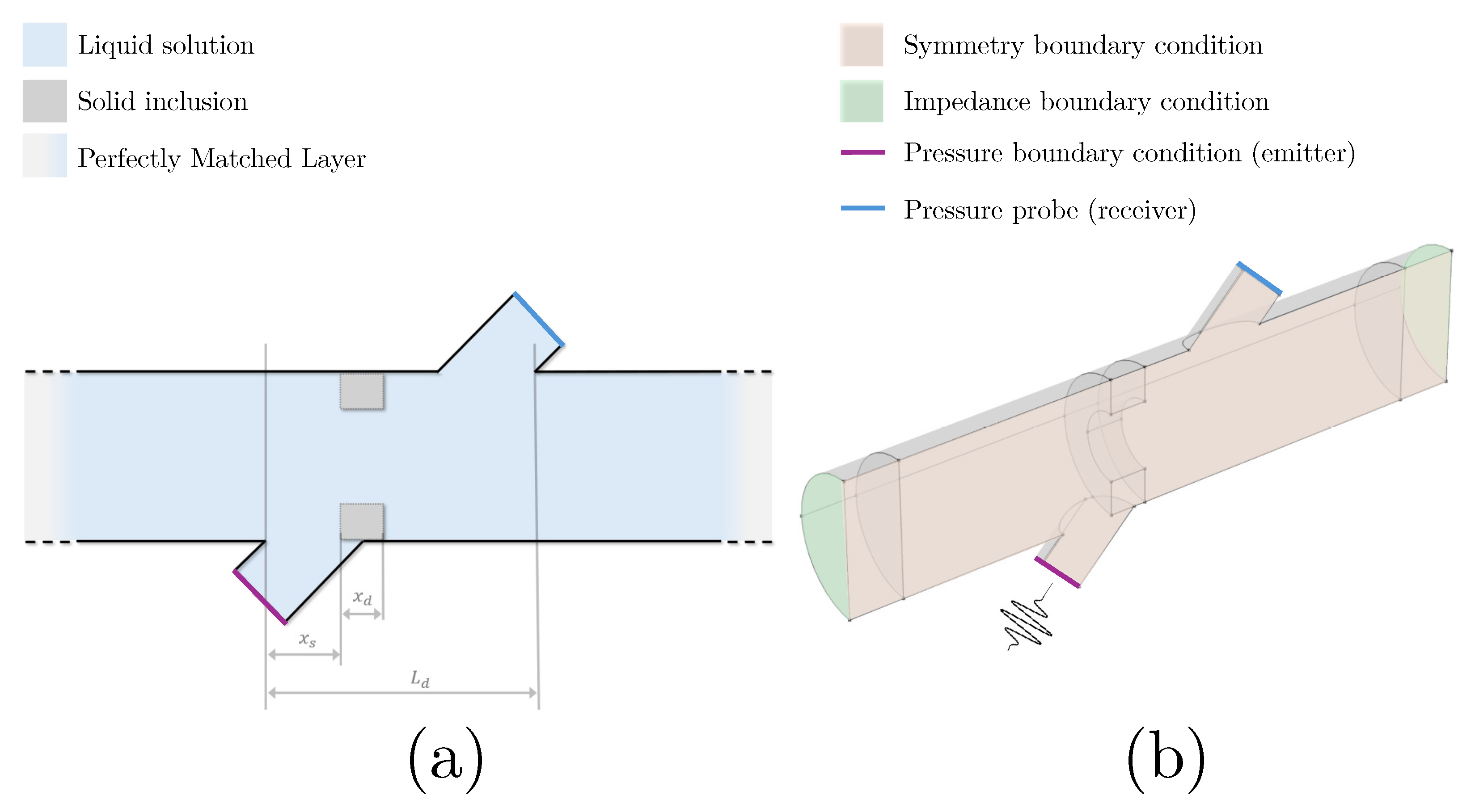
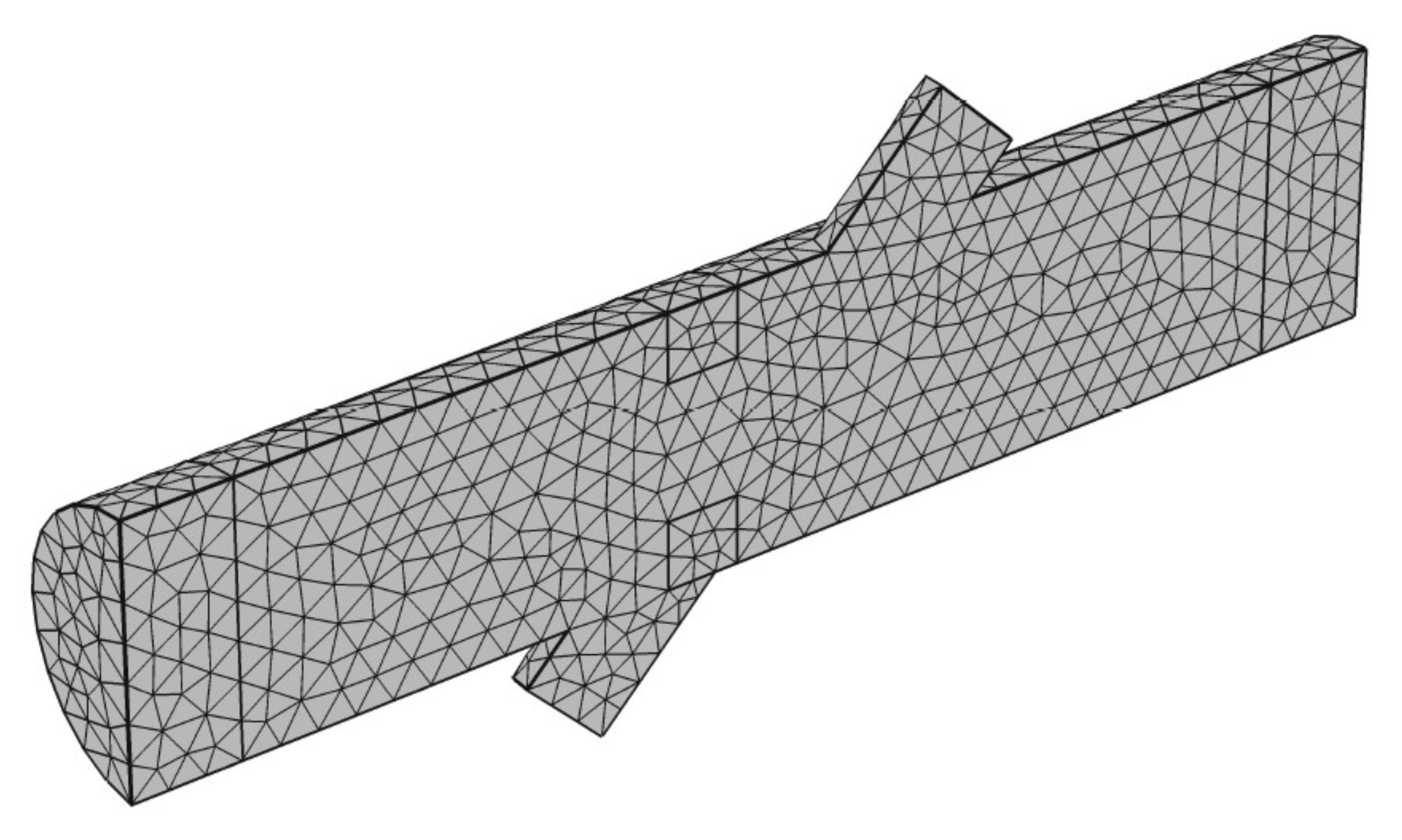

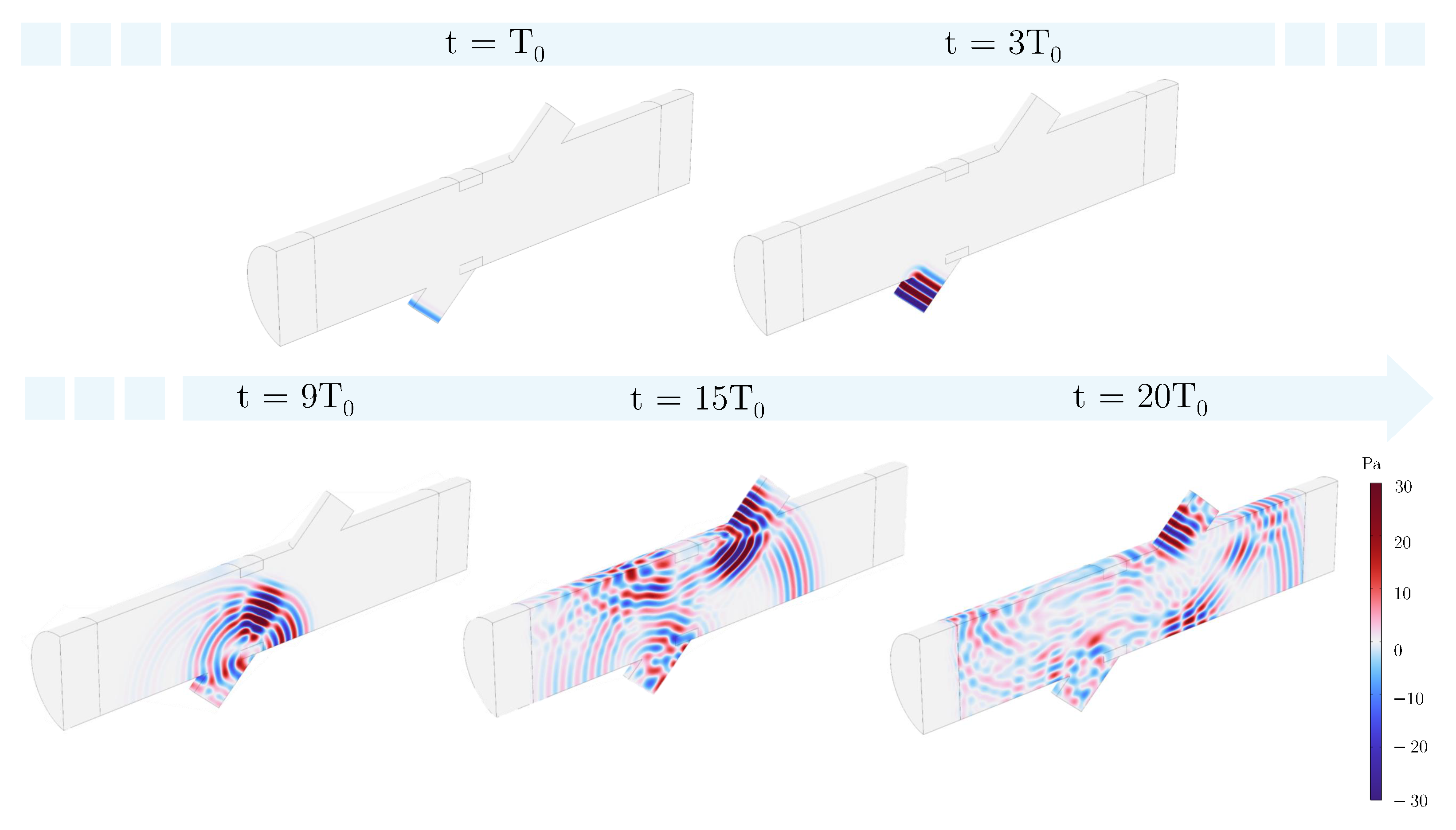
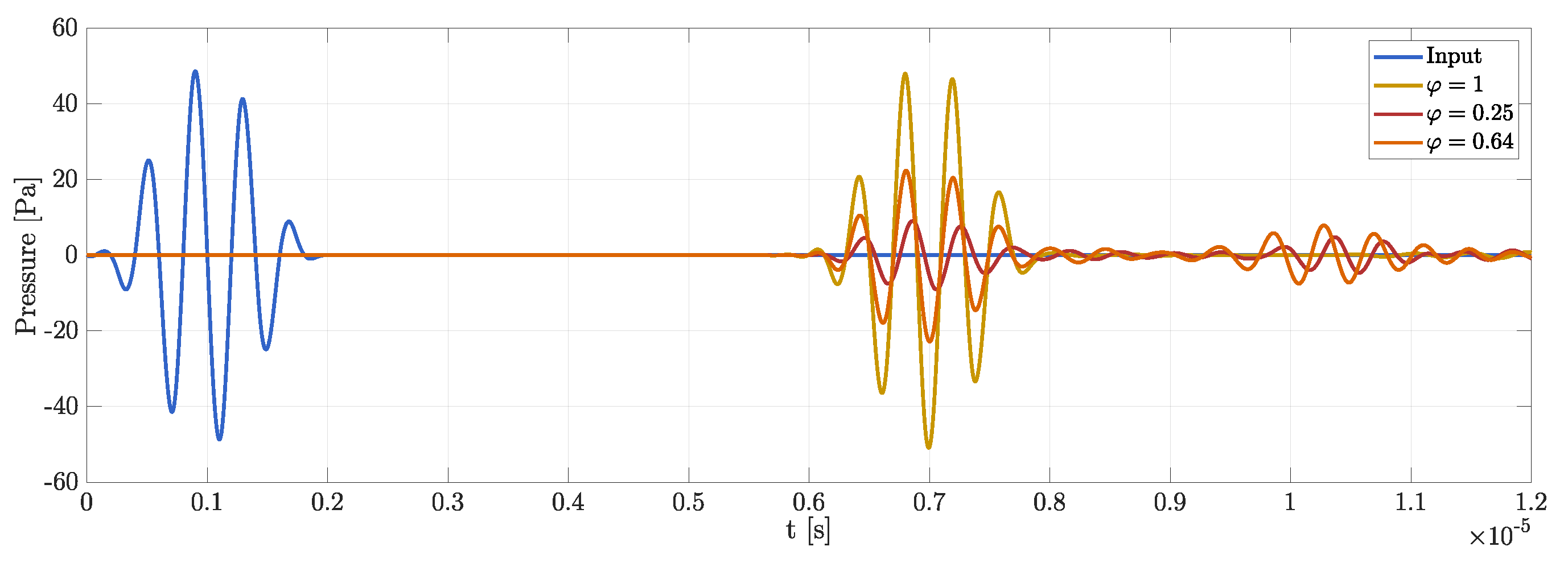
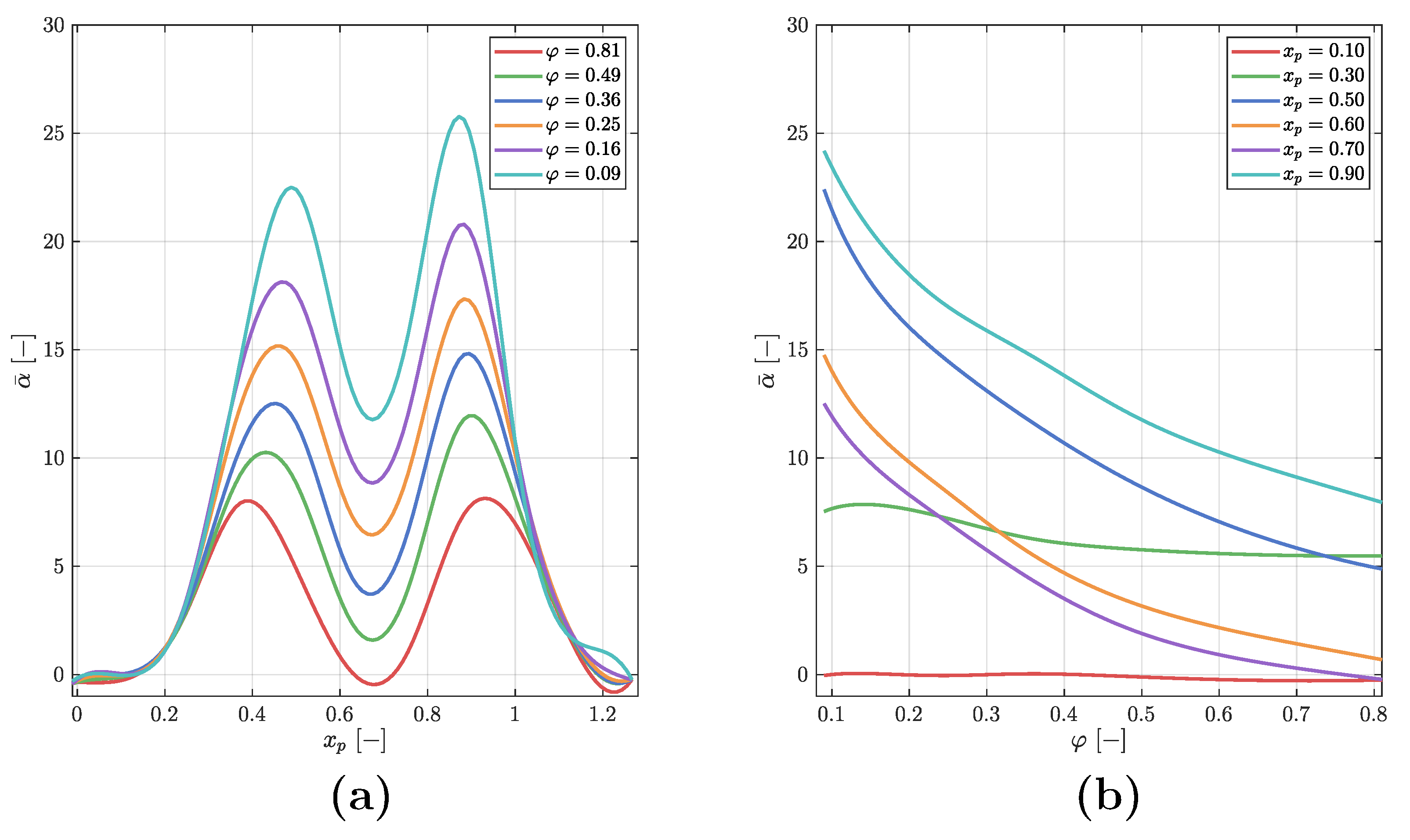
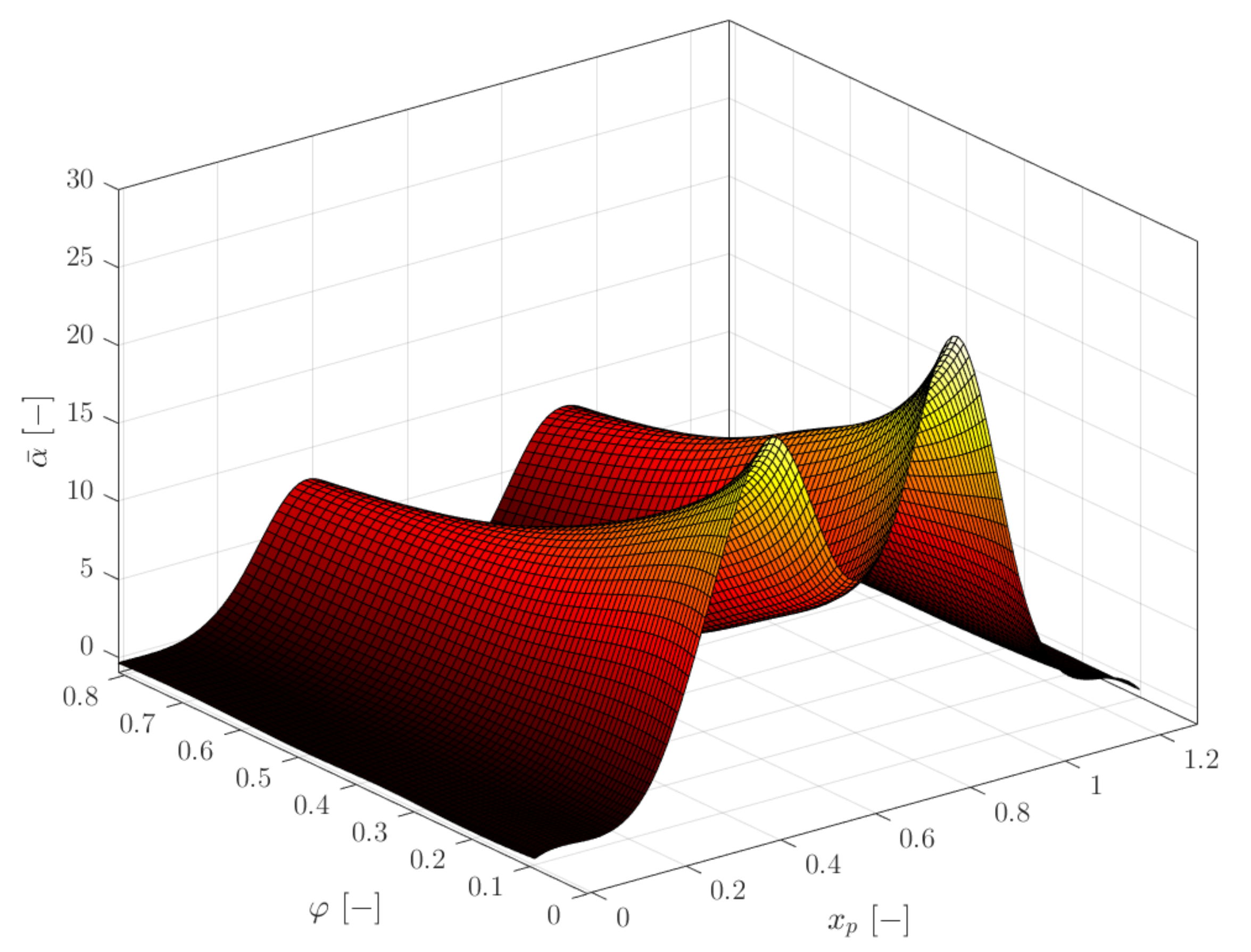
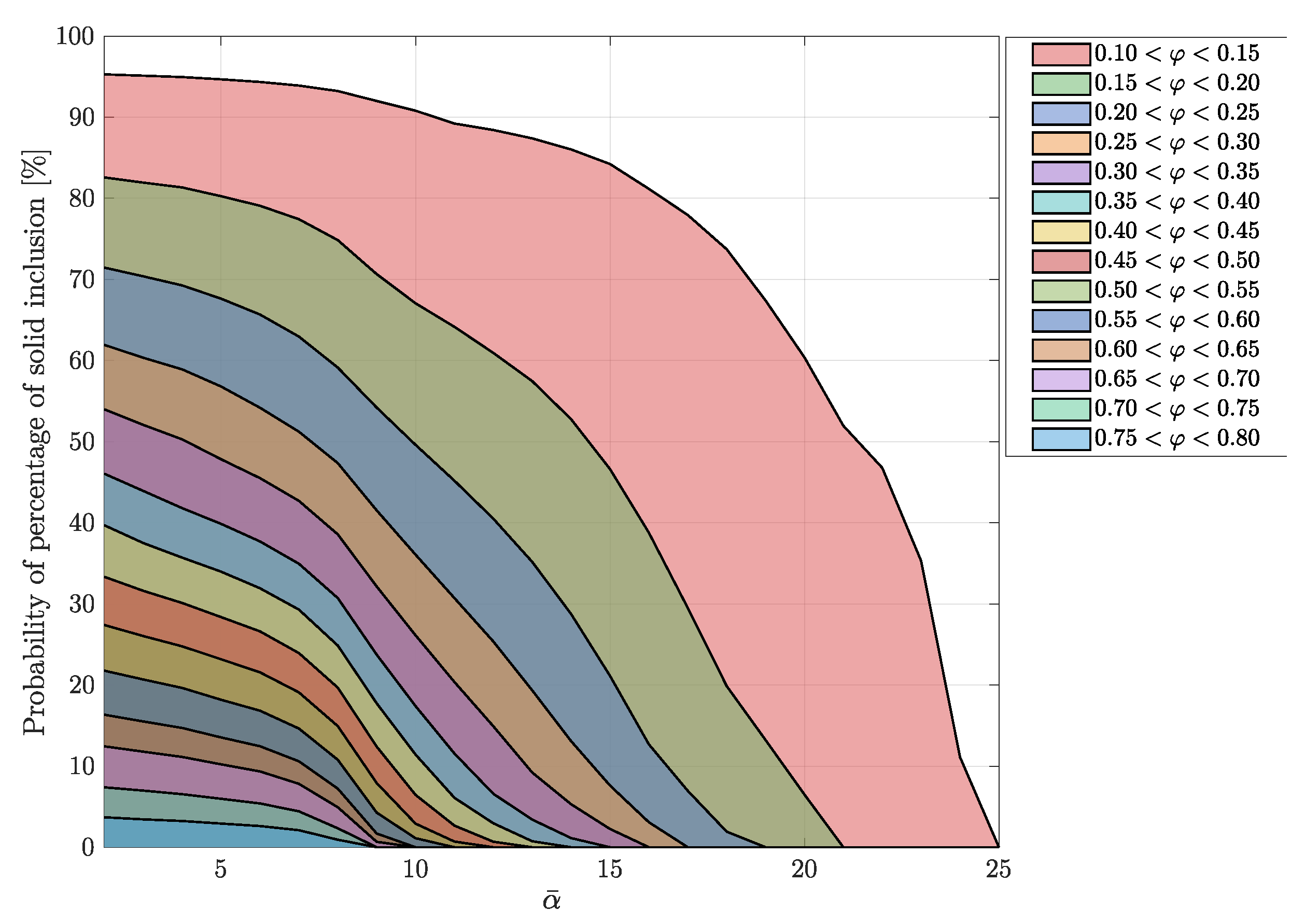

Disclaimer/Publisher’s Note: The statements, opinions and data contained in all publications are solely those of the individual author(s) and contributor(s) and not of MDPI and/or the editor(s). MDPI and/or the editor(s) disclaim responsibility for any injury to people or property resulting from any ideas, methods, instructions or products referred to in the content. |
© 2025 by the authors. Licensee MDPI, Basel, Switzerland. This article is an open access article distributed under the terms and conditions of the Creative Commons Attribution (CC BY) license (https://creativecommons.org/licenses/by/4.0/).
Share and Cite
Dragonetti, R.; Romano, R.A.; Di Giulio, E. Numerical Evaluation of Ultrasonic Detection of Solid Occlusions in CSP Molten Salt Piping. Appl. Sci. 2025, 15, 1373. https://doi.org/10.3390/app15031373
Dragonetti R, Romano RA, Di Giulio E. Numerical Evaluation of Ultrasonic Detection of Solid Occlusions in CSP Molten Salt Piping. Applied Sciences. 2025; 15(3):1373. https://doi.org/10.3390/app15031373
Chicago/Turabian StyleDragonetti, Raffaele, Rosario Aniello Romano, and Elio Di Giulio. 2025. "Numerical Evaluation of Ultrasonic Detection of Solid Occlusions in CSP Molten Salt Piping" Applied Sciences 15, no. 3: 1373. https://doi.org/10.3390/app15031373
APA StyleDragonetti, R., Romano, R. A., & Di Giulio, E. (2025). Numerical Evaluation of Ultrasonic Detection of Solid Occlusions in CSP Molten Salt Piping. Applied Sciences, 15(3), 1373. https://doi.org/10.3390/app15031373






